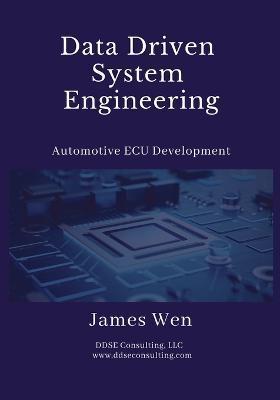Data Driven System Engineering: Automotive ECU Development

Data Driven System Engineering: Automotive ECU Development
Every computing system has two, and only two attributes: Data Value and Data timing, which represent fully the system functionalities from the system external behavior point of view.
The data driven system engineering is the approach to develop the system by focusing on the two attributes mentioned above, in which, the data values are derived by the system operation concept design, and the data timing is derived by the system latency design. Based on which, this book provides a full range of system and software engineering development activities:
Requirement Elicitation
Requirement Engineering
System and Software Architecture Design
System Operation Concept Design
System and Software Structure Design
Electronic Architect Design
Functionality Allocation
Failure Mode and Effect Analysis (FMEA)
Safety
Cybersecurity (full compliant with UN ECE 155/156)
System and software Verification
System and Software Integration and Verification
System and Software Black Box Verification
each of which has its own clearly defined scope and approach, which is different from the conventional development, in some cases even different from some ISO standards, for example:
Safety Development: the safety requirements for every part in a vehicle are cascaded from the vehicle safety requirements, which is different from the Concept Phase in the Part 3 of ISO 26262, and the functional safety development will be fully covered by (1) Reliability (2) Availability (3) Quality.
Error Detection and Protection: there are only two types of errors to be detected in a computing system: Data Value error and Data Timing error, to detect which, there are only two aspects to be considered: (1) input data (2) middle data and output data in addition to the platform error detection. The approaches of detection and protection include (1) data transfer protocol check, (2) data range and reasonable value check, (3) execution time check and control.
FMEA: this book provides the optimized approach by following the data relationships between the input data, middle data and output data, which will be both inductive and deductive.
Cybersecurity: this book provides the full solution to cover the UN ECE 155 by implementing three aspects: (1) Trusted contents in the ECU (2) Authenticated access to the ECU (3) Authenticated communication with the ECU.
309.92Lei
309.92Lei
Indisponibil
Descrierea produsului
Every computing system has two, and only two attributes: Data Value and Data timing, which represent fully the system functionalities from the system external behavior point of view.
The data driven system engineering is the approach to develop the system by focusing on the two attributes mentioned above, in which, the data values are derived by the system operation concept design, and the data timing is derived by the system latency design. Based on which, this book provides a full range of system and software engineering development activities:
Requirement Elicitation
Requirement Engineering
System and Software Architecture Design
System Operation Concept Design
System and Software Structure Design
Electronic Architect Design
Functionality Allocation
Failure Mode and Effect Analysis (FMEA)
Safety
Cybersecurity (full compliant with UN ECE 155/156)
System and software Verification
System and Software Integration and Verification
System and Software Black Box Verification
each of which has its own clearly defined scope and approach, which is different from the conventional development, in some cases even different from some ISO standards, for example:
Safety Development: the safety requirements for every part in a vehicle are cascaded from the vehicle safety requirements, which is different from the Concept Phase in the Part 3 of ISO 26262, and the functional safety development will be fully covered by (1) Reliability (2) Availability (3) Quality.
Error Detection and Protection: there are only two types of errors to be detected in a computing system: Data Value error and Data Timing error, to detect which, there are only two aspects to be considered: (1) input data (2) middle data and output data in addition to the platform error detection. The approaches of detection and protection include (1) data transfer protocol check, (2) data range and reasonable value check, (3) execution time check and control.
FMEA: this book provides the optimized approach by following the data relationships between the input data, middle data and output data, which will be both inductive and deductive.
Cybersecurity: this book provides the full solution to cover the UN ECE 155 by implementing three aspects: (1) Trusted contents in the ECU (2) Authenticated access to the ECU (3) Authenticated communication with the ECU.
Detaliile produsului










